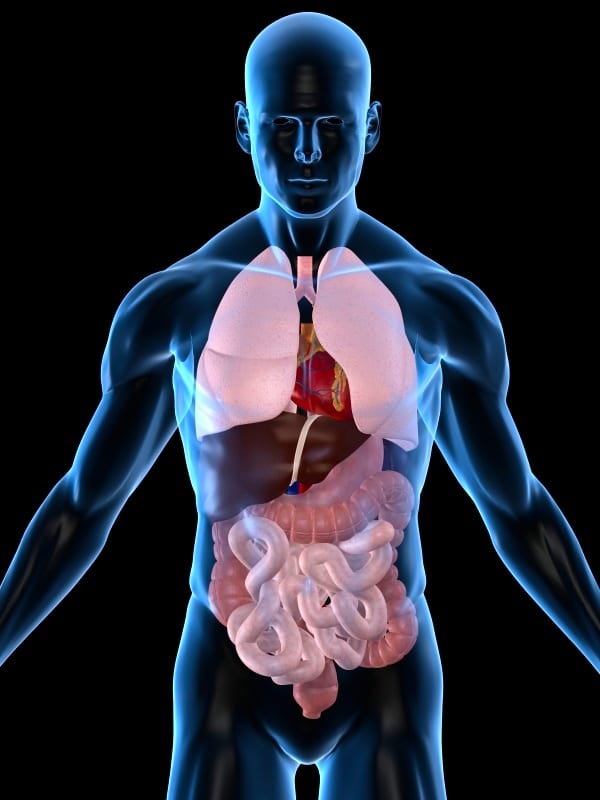Back
How Can Pelvic Floor Physical Therapy Help with Small Intestinal Bacterial Overgrowth (SIBO)?
By Pelvic Health Physical Therapy on 2/2/2024

What is visceral mobilizations?
Under the manual therapy umbrella, visceral mobilization (or visceral manipulation) is a hands-on treatment used to treat various pelvic floor as well as contributing musculoskeletal conditions. The goal of this treatment is to improve motility and mobility of target organs that may be contributing to musculoskeletal conditions, digestive issues, as well as urinary and sexual dysfunctions. Motility refers to movement inside an organ itself, such as the peristalsis (involuntary constriction and relaxation of muscles) of the small intestine, the turning of the stomach to break down foods, and the moving of liquids through the kidneys. Mobility refers to the ability of an organ to slide and glide within the body itself, the abdomen, pelvis, and thorax. When we bend forward or breathe in, our organs need to be able to adjust accordingly. Advancements in the field of pelvic floor physical therapy have generated a better understanding of the components of the abdominopelvic canister (including the ribs, the lungs, the contents of the stomach, and the pelvic floor) work together to support the body and contribute to normal function.
Why do we care?
The viscera (AKA organs) carry a significant amount of weight and are subject to the same laws of physics and types of traumas as the muscles and bones of the body. The connective tissue that’s attached to your organs influences how you move. Weighing in anywhere between 838 and 2584 kg, the liver moves an average of 3 cm with every breath you take, and since it does this approximately 20,000 times in a 24-hour period, this means that it travels around 86.6 km per year!!
If an organ is subject to trauma (eg: tackled during a football game), the inflammation can subject the tissue to tighten up and cause adhesions, thereby causing the organ to get stuck. Due to the connective tissues surrounding the organ, the pain can refer (or place itself) to a different part of the body, such as the liver to the upper back or the kidney to the lower back, and inner and outer thighs (see Figure 1).

(figure 1)
What is Small Intestinal Bacterial Overgrowth?
Small Intestinal Bacterial Overgrowth (SIBO) is a condition characterized by an abnormal increase in the number and/or types of bacteria in the small intestine. Normally, the small intestine has relatively fewer bacteria compared to the large intestine. However, in SIBO, an overgrowth of bacteria occurs in the small intestine, leading to various digestive symptoms.The bacteria in the small intestine can ferment carbohydrates, producing gases such as hydrogen and methane. This fermentation process can lead to symptoms such as:
Bloating:
Excessive gas production can cause the abdomen to feel bloated and distended.Abdominal Pain or Discomfort:
The presence of excess bacteria and gas in the small intestine can lead to abdominal pain or discomfort.Diarrhea or Constipation:
SIBO can disrupt normal bowel function, leading to changes in bowel habits. Some individuals may experience diarrhea, while others may have constipation.Flatulence (Gas):
Increased gas production by bacteria can result in frequent passing of gas.Nutritional Deficiencies:
The overgrowth of bacteria in the small intestine can interfere with the absorption of nutrients, leading to nutritional deficiencies.Fatigue:
Malabsorption of nutrients may contribute to fatigue and weakness.Several factors can contribute to the development of SIBO, including impaired motility of the small intestine, structural abnormalities, and certain medical conditions. Conditions such as irritable bowel syndrome (IBS), Crohn's disease, and celiac disease may be associated with SIBO.
Diagnosis of SIBO is typically done through breath testing, where the levels of certain gases produced by bacteria are measured. Treatment often involves antibiotics to reduce bacterial overgrowth, along with dietary changes to manage symptoms. It's important for individuals experiencing symptoms suggestive of SIBO to consult with a healthcare professional for proper evaluation and management.
How can visceral mobilizations help Small Intestinal Bacterial Overgrowth (SIBO)?
People struggling with SIBO often benefit from visceral manipulation, as bringing their motility back into balance helps support the body’s ability to heal. SIBO is often caused or made worse by poor or inefficient timing in the digestive tract. When food is moving too slowly or too quickly, it will be unable to break down enough, which can ferment in the gut, and thus attract an inflammatory response. The inflammatory response can clog both the hepatic artery and alter lymph absorption in the lining of the small intestine, thus diminishing nutrient absorption.
Visceral manipulation helps get the digestive tract back in sync in terms of the timing and release of gastric juices, which can lead to far fewer flair-ups of SIBO symptoms, such as bloating and cramping. This practice can also be used to release more bacteria located deeper in the folds of the intestinal wall so that the body can naturally discard it.
If you’re experiencing pelvic floor dysfunctions associated with the issues above, please reach out to us at Pelvic Health Center in Madison, NJ to set up an evaluation and treatment! Feel free to call us at 908-443-9880 or email us at receptionmadison@pelvichealthnj.com.
Read More:
Dry Needling for C-Section Scars and Postpartum Recovery By Dr. Christine Martirez PT, DPT on 10/15/2024 Learn how dry needling can be used for c-section scars and c-section recovery How Red Light Therapy Can Be Used to Treat Pelvic Floor Dysfunctions By Dr. Christine Martirez PT, DPT on 10/15/2024 Learn about red light therapy and how it can be used to treat pelvic floor dysfunctions
Are you ready to live pain free?
Request An Appointment